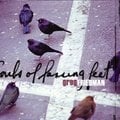Greg Friedman picked up his first guitar at 13 and became a fixture in Baltimore and Washington DC’s thriving punk rock scene. He later studied at Peabody Institute, where his classical training along with his punk fury, fueled his appetite for new musical challenges, resulting in a move to San Diego.
Still, he says he and his wife “had to have all the rugs removed” before moving into the former party house of the UCSD water polo team. About living in La Jolla, Friedman says he enjoys “the view from the canyon at sunset” and dislikes the fact that “La Jolla is not actually a word in Spanish.”
He tours the country disguised as Ott Truckee, bassist for the Truckee Brothers, a band that also covers a lot of musical ground. “I’ve listened to and played so many kinds of music. My memories are indelibly linked to the songs that played while my life unfolded, whether it was the Cocteau Twins, over which the joys and heartaches of relationships played out, or the Dead Kennedys helping me through the angst of high school. So, I don’t feel satisfied settling into any one genre. It wouldn’t be a true picture of who I am and what I have to say.”
His solo debut record Souls of Passing Feet was nominated Best Pop Album at the 2007 San Diego Music Awards. He followed that up in 2013 with Can’t Talk Now, which sported one of the last album covers designed by famed artist Storm Thorgerson (Pink Floyd, Peter Gabriel, etc.), who passed away in April 2013.
“I wanted this album to celebrate the vinyl format, honoring the music I grew up with. Staring at the album cover while listening to a record is part of that experience. When I started thinking about artwork for my album, I pulled some of my favorite covers out of my collection, looking for inspiration. Pink Floyd’s Dark Side of the Moon and Wish You Were Here, Peter Gabriel’s Car and Melt, the list goes on. Out of curiosity, I looked to see who the cover designers were, to discover they’d all been by the same guy: Storm Thorgerson. I saw it as a sign. So, I took a chance, contacted Storm, and asked if he’d create the artwork for my album. He wrote back that he’s rarely in the States but that he happened to be in Los Angeles, and I should come talk to him. I jumped in the car, drove to L.A., and we spent the afternoon talking about music, art, and life.”
“Storm looked at my music and lyrics, then sent ideas that he felt captured the album concept. Can’t Talk Now is Storm being funny, as in, ‘Sorry, I’m tied up at the moment.’”
 Facebook
Facebook X
X  Instagram
Instagram TikTok
TikTok Youtube
Youtube

